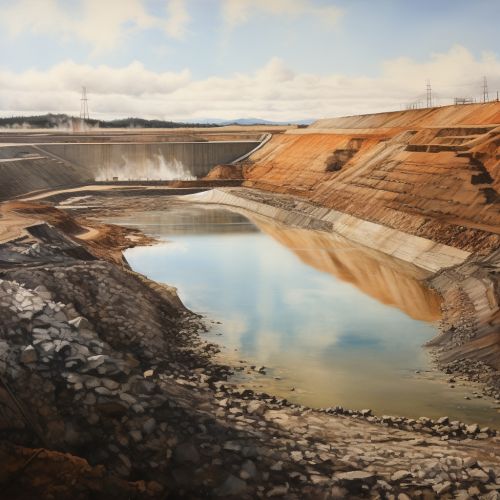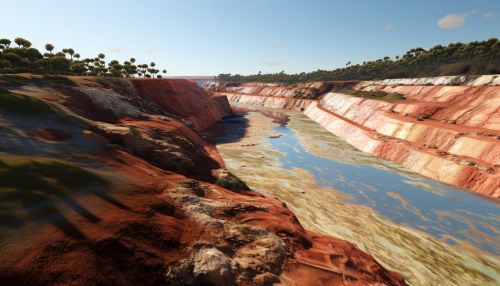Tailings
Overview
Tailings are the materials left over after the process of separating the valuable fraction from the uneconomic fraction of an ore. They are distinct from overburden and waste rock, which are the materials that are removed to expose the ore body. Tailings are usually produced from the mill in slurry form (a mixture of fine mineral particles and water).
Composition
The composition of tailings varies from mine to mine, with the type and quantity of waste minerals, the particle size, and the presence of harmful chemicals all being factors. Tailings usually contain the bulk of the ore minerals that were not extracted during the milling process. These are typically sulphide minerals, such as pyrite, which can oxidise and cause acid mine drainage.
Production and Storage
Tailings are produced in a process called 'milling'. The ore is crushed and ground to a fine slurry, which is then treated with chemicals to separate the valuable minerals. The remaining slurry, now largely devoid of value, is the tailings. This slurry is usually stored in large dams or ponds, known as tailings storage facilities (TSFs). These facilities are carefully engineered to prevent leakage and to withstand extreme weather events.


Environmental Impact
The environmental impact of tailings can be significant. If not properly managed, tailings can cause water and soil pollution, damage to ecosystems, and health risks to humans and wildlife. The main environmental issues associated with tailings are the potential for acid mine drainage, the release of harmful chemicals, and the physical disturbance of the landscape.
Management and Reclamation
The management of tailings involves the safe storage and eventual reclamation of the tailings storage facilities. This includes the prevention of acid mine drainage, the stabilisation of the tailings, and the restoration of the landscape. Reclamation can involve the planting of vegetation to stabilise the tailings and to provide habitat for wildlife. In some cases, tailings can be reprocessed to extract remaining valuable minerals, which can offset the costs of reclamation.
